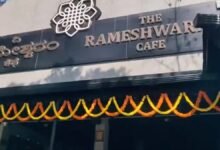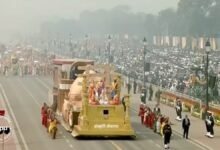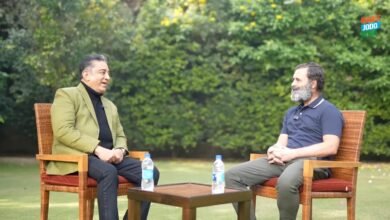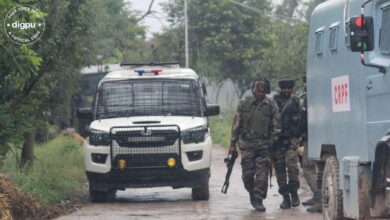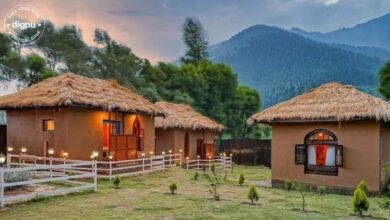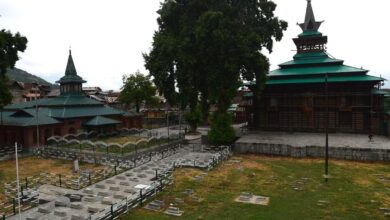J&K Police bans live coverage of gunfights amid allegations of excesses
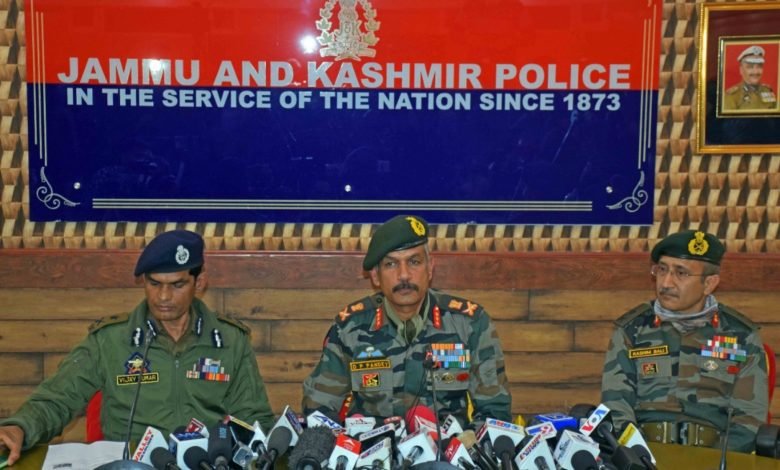
Death of a lady allegedly during a CASO in Srinagar, Allegation of hardships from frequent CASOs by a detained woman SPO and recent beating of a journalist in south Kashmir are some incidents reported by media that make the ban sound ‘repressive’, working journalists opine.
SRINAGAR (J&K) —
The recent advisory of Jammu and Kashmir Police, barring media persons from live coverage of gunfights for their respective media outlets, has not gone down well with media organizations.
According to independent observers, the ban sounds ‘repressive’ given the recent incidents of ‘excesses’ reported by the media in Kashmir.
The advisory of ban on live coverage of gunfights
On April 07, Inspector General of Police (IGP) for Kashmir range, Vijay Kumar issued an advisory for media persons, asking them to desist from carrying any live coverage of gunfights or ‘law and order situations’.
“Don’t interfere in professional and bonafide duty of police and security forces at encounter sites,” the advisory said, adding, “The freedom of speech and expression is subject to reasonable restrictions that should not violate other people’s right to life guaranteed under Article 21 or putting the national security in jeopardy.”
“No operational content should be carried which is likely to incite violence or contains anything against maintenance of law and order or which promotes anti-national sentiment,” IGP Vijay Kumar further said as per a local news gathering agency.
Media bodies in Kashmir anguished
After the advisory, the media bodies in Kashmir expressed anguish over the comments attributed to IGP Kashmir regarding the ban.
The media associations that expressed their dissatisfaction over the police advisory included Journalist Federation of Kashmir (JFK), Kashmir Editors Guild (KEG), Kashmir Working Journalists Association (KWJA), Kashmir Press Photographers Association (KPPA), Kashmir News Television Journalist Association (KNTJA), Kashmir Video Journalists Association (KVJA), Kashmir Press Club (KPC), Kashmir Journalists Association (KJA), Anjuman Urdu Sahafat, Kashmir Union of Working Journalists (KUWJ), Jammu and Kashmir Press Association (JKPA) and JK Editors Forum (JKEF) among other district-level organizations.
“If this is a part of the official policy of police, then it appears to be a tactic to coerce journalists into not reporting facts on the ground,” the media bodies rued.
The statement further said, “It also seems to be a part of the string of measures taken by the authorities to suppress freedom of press in the region. Summoning journalists to police stations, filing FIRs and seeking informal explanations for their work has intensified in the past two years.”
“The media in Kashmir are aware of the journalistic guidelines and ethics or situations like encounters, law and order situations and have always upheld these principles. Covering and reporting law and order situations in the region is one of the basic requirements for most news organizations and hence an essential part of the professional role of media professionals. Barring them from covering such events would mean stopping them from delivering their professional duties,” the media bodies said.
The journalist bodies urged IGP Kashmir to ‘clarify’ the statement attributed to him.
IGP Kashmir reiterates his advisory; directs SSPs to brief media about gunfights
Two days after having issued the advisory, IGP Kashmir Vijay Kumar reiterated his comments. However, he said that district SSPs will brief media men with updates about gunfights.
According to the IGP, if media persons go closer to the ‘operation’ sites, the same may disturb the men involved in anti-militancy operations and the live coverages of encounters may trigger law and order situation in other areas.
During the presser at Police Control Room in Srinagar, the IGP was asked if injuries to civilians could be reported by the media. He responded, saying, “I reiterate that no live coverage of encounters will be allowed. A stray bullet can hit any media person if they go closer to the operation site. Covering live encounters can pose threat to the journalists.”
He further said that live coverage of encounters can instigate people in other adjoining areas of the ‘operational’ site and lead to law and order situation.
“Journalism has been virtually criminalized”
A recent report released by the Concerned Citizens’ Group (CCG) led by former Union Finance Minister Yashwant Sinha, which visited Kashmir from March 30 to April 02, said that media persons be allowed to freely report from the ground.
“Journalism has been virtually criminalized. No protests by civil society are allowed, nor are rallies by political parties permitted. The police do not hesitate to summon journalists and ordinary citizens and even lock them up under the Public Safety Act,” the report added.
The group members, including Executive Secretary, Centre for Dialogue and Reconciliation, Delhi, Sushobha Barve; former chairman of the Minorities Commission and the first Chief Information Commissioner of India, Wajahat Habibullah; Vice Marshal (Retd) Kapil Kak; and former editor and independent journalist Bharat Bhushan, also suggested that security forces not blow-up the houses of villagers occupied forcibly by militants for shelter or for using them tactically against the security forces, and allow civil society organizations to function by holding meetings, seminars and discussions which would allow the people to vent their emotions and relieve the psychological pressure on them.
EGI calls the police advisory “draconian and undemocratic”
On Saturday (April 17), the Editors Guild of India (EGI) demanded the withdrawal of J&K Police’s advisory on the specious plea, as per EGI, that it is “likely to incite violence” or that it can promote “anti-national sentiment”.
In a statement, EGI said, “Nothing can be further from the truth. Visibly, the police is giving an impression of trying to maintain peace by attempting to control the fallout of violence in a high strung environment, but what is being instead done is an attempt by the security forces to escape from any kind of media scrutiny about the flow of events behind the violence.”
EGI said that live reporting from conflict areas, including gunfight between government forces and militants, is one of the most important journalistic duties of any responsible media, and requires extreme grit and determination on part of the reporters.
“At best, there may be some guidelines that can be issued with respect to reporting from such scenes, with the aim of protecting the integrity of tactics and plans of security agencies, as well as to avoid journalists from interfering with the evolving situation and from sensationalizing the issue that can stir up emotions at audience’s end. Globally those have been the norms adopted by responsible governments,” added the statement.
“In this respect, the advisory of Kashmir Police is draconian and undemocratic, and flies in the face of the stellar role journalists have played in reporting conflict in the country. Therefore, the advisory must be withdrawn immediately,” EGI added.
Working journalists call it ‘repressive’ act
Many of the working journalist opine that the ban on live coverage of gunfights is more or less a ‘repressive’ tactic of the police, hampering their mobility during gunfights and other incidents of violence or as the police calls it ‘law and order situations’.
Anuradha Bhasin, a senior journalist based in Jammu, while responding to the police advisory said that journalists cover encounters for facts, information which are vital in a democracy. “It is a call to duty. Stop ‘interfering’ in that! (Is there one incident where live coverage jeopardised security?” she asked on her Twitter handle.
“Armed forces including the J&K Police have been repeatedly accused of using excessive force against journalists, especially while covering gunfights,” a local senior journalist, wishing anonymity, said while speaking to Digpu News, adding that police needs to respect the journalist fraternity as like government forces, they are just doing their job.
Another young journalist, while shying away to disclose his name, observes that some of the recent alleged ‘excesses’ committed by the men in uniform have put pressure on the local police to ‘restrict’ access of media persons at the places of gunfights and other ‘law and order situations’. However, he calls the police advisory ‘repressive’ in nature.
“Death of a lady allegedly during a CASO in Srinagar, Allegation of hardships from frequent CASOs by a detained woman SPO and recent beating of a journalist in south Kashmir are some incidents reported by media that make the ban sound ‘repressive’, the working journalist opines.
**
This story is part of a special edition series and it is not for reproduction.
